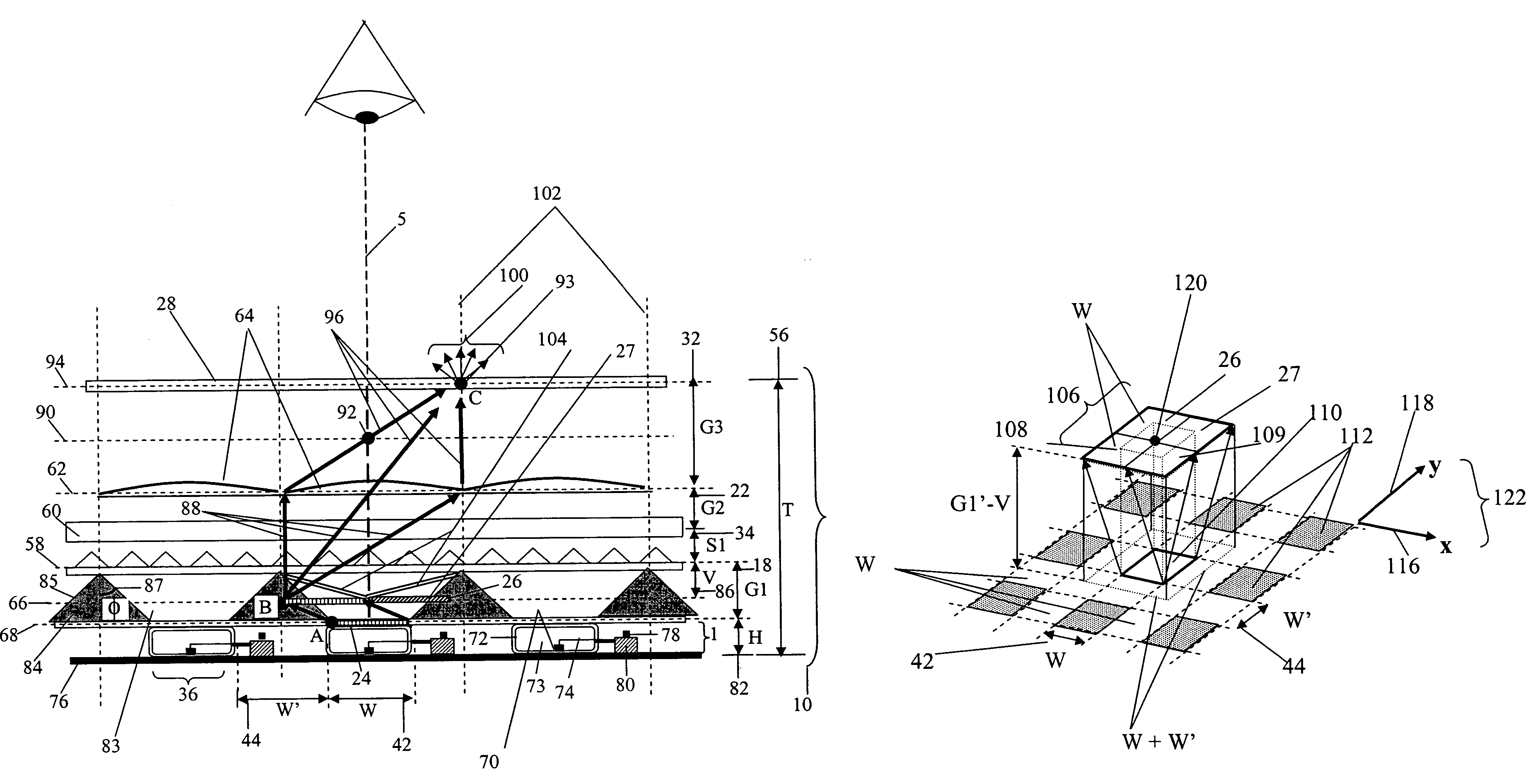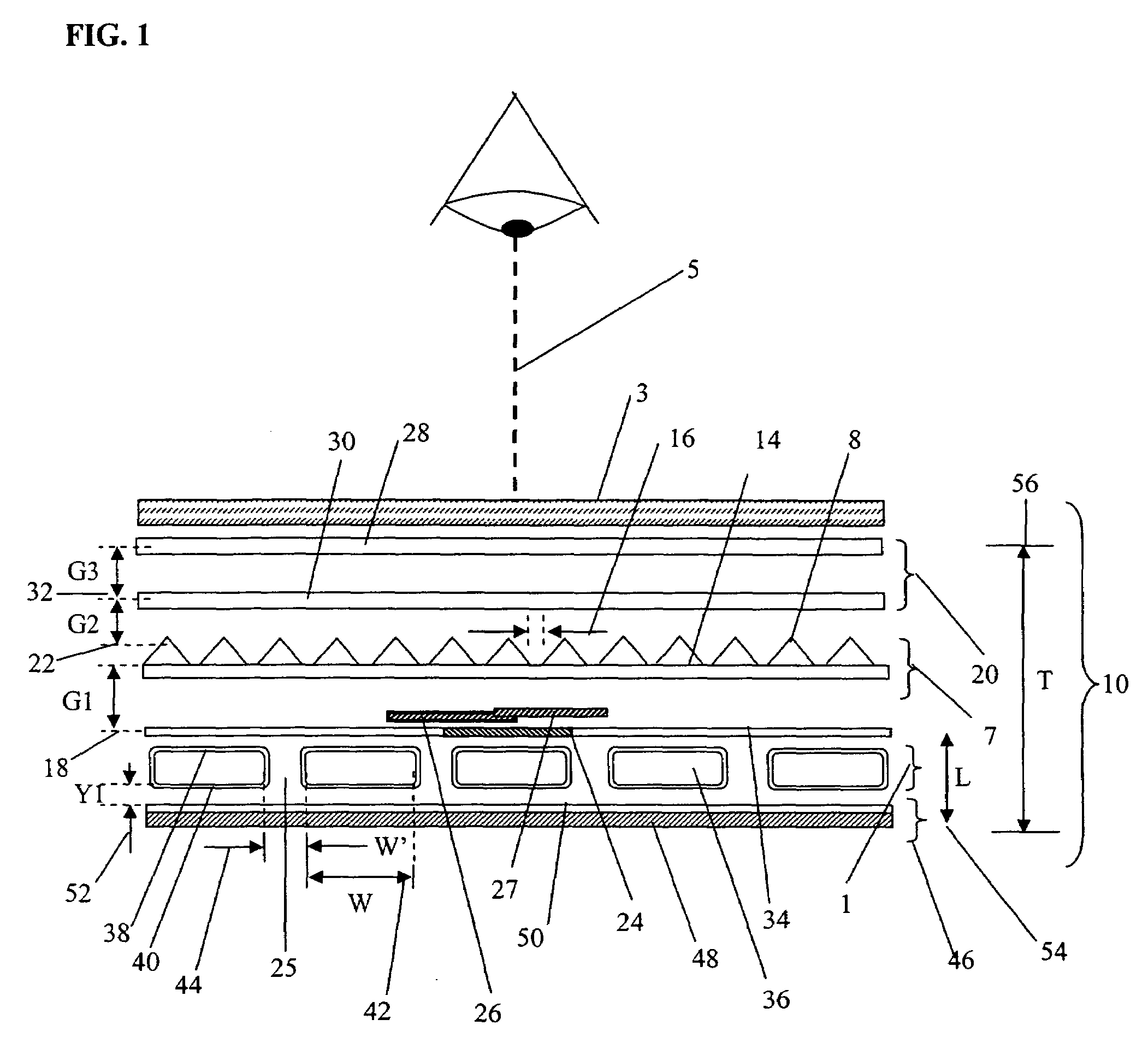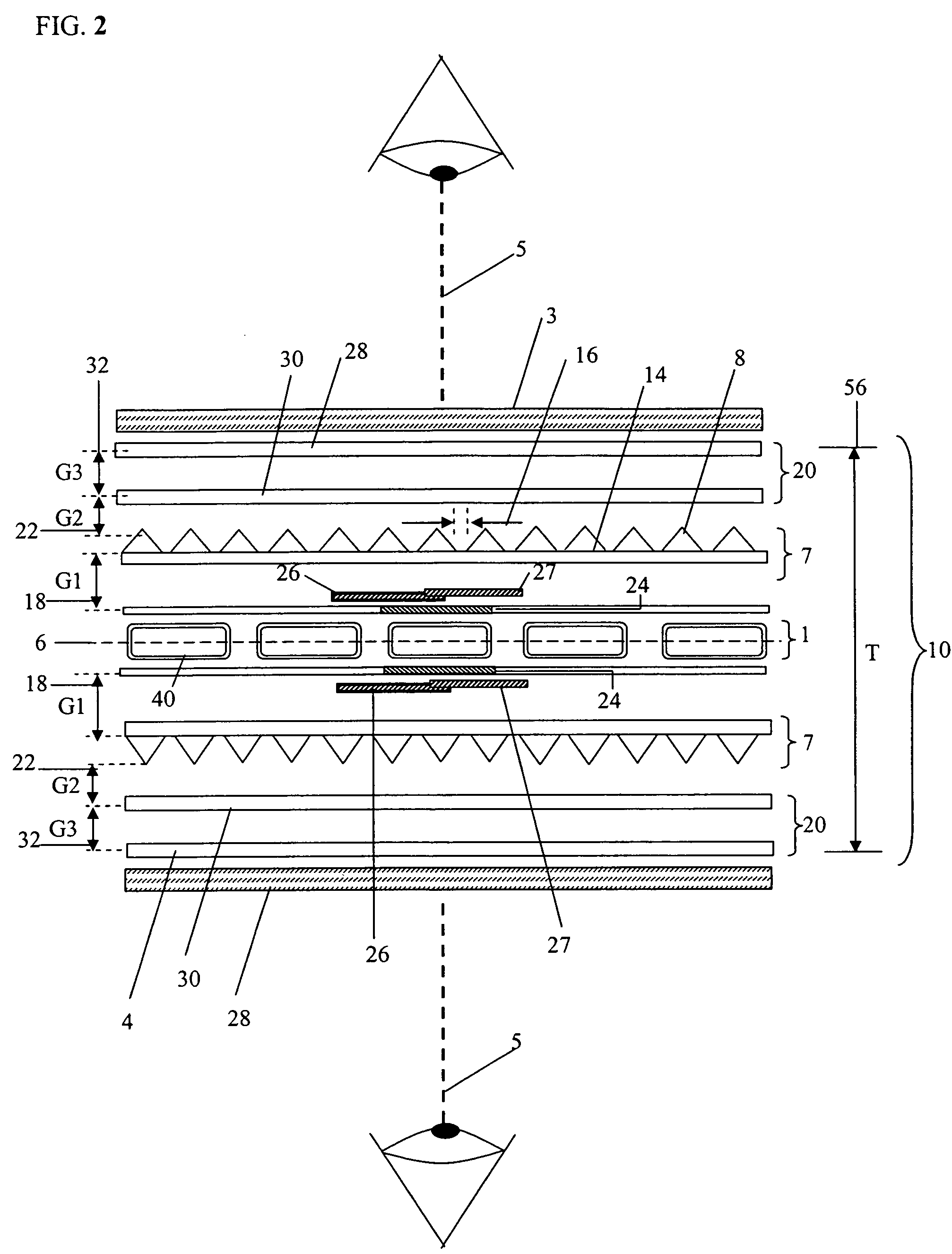Uniform illumination system
a technology of uniform illumination and optical system, applied in lighting applications, instruments, applications, etc., can solve the problems of low angle conversion efficiency, difficult, if not impossible, to collect all the emitted optical power using most mirrors and lenses,
- Summary
- Abstract
- Description
- Claims
- Application Information
AI Technical Summary
Benefits of technology
Problems solved by technology
Method used
Image
Examples
Embodiment Construction
[0158]One form of the present invention involves the use of a stack of light directing layers disposed above a plane of separated emitters arranged either as an array of parallel stripes or as a two-dimensional array of bounded emitting regions such that a directed output beam of even uniformity is created as if from a continuous emitter of area equal to that to the output aperture. One (or two) of the light directing layers are prism sheets whose geometry and elevation above the plane of emitters is chosen uniquely so as to create the required overlap and diffusion of emitter images.
[0159]An optical system constructed in accordance with one principal form of the invention is indicated generally in FIG. 1 and represents a side elevation. The optical system 10 embodies a structure and method, which uses various optical elements, disposed in a compact geometry relative to an intrinsically discontinuous light source 1 formed by an array of emitters, and manipulates this light to genera...
PUM
 Login to View More
Login to View More Abstract
Description
Claims
Application Information
 Login to View More
Login to View More - R&D
- Intellectual Property
- Life Sciences
- Materials
- Tech Scout
- Unparalleled Data Quality
- Higher Quality Content
- 60% Fewer Hallucinations
Browse by: Latest US Patents, China's latest patents, Technical Efficacy Thesaurus, Application Domain, Technology Topic, Popular Technical Reports.
© 2025 PatSnap. All rights reserved.Legal|Privacy policy|Modern Slavery Act Transparency Statement|Sitemap|About US| Contact US: help@patsnap.com



